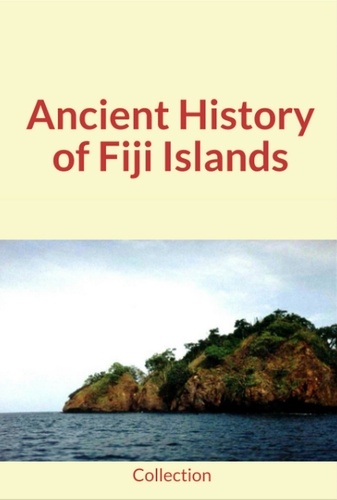En cours de chargement...
This book deals with the ancient history of Fiji.
The Fiji is an island country in the South Pacific Ocean that gained its independence in 1970. This former British colony consisting of an archipelago, the most important in Polynesia, lies between 15° and 20° South.
The first western contact with Fiji was made in 1643 when Captain Abel Tasman entered Fijian waters and sighted several islands and reefs without realizing the nature of his discovery.
Over a hundred years later, Captain Cook made a second contact by stopping at one of the southern Lau Islands. Real knowledge of the area began in 1792 when Captain Bligh sailed through the archipelago from the southeast to the northwest, following the famous mutiny of the Bounty. Bligh made an attempt to land, was attacked by natives, and continued through the islands with no more landings. He did, however, make a record of most of the islands he passed.
In the nineteenth century, commercial contacts began in the form of sandalwood trade.
This profitable commodity brought Europeans and Americans first to the Sandalwood Coast on the west side of Vanua Levu. During this period the first systematic survey of Fijian waters was made by the U. S. Exploring Expedition in 1840. After little more than a decade the sandalwood supply was depleted to the point where trade virtually ceased.
As a result of this initial commercial contact, which was mainly around western Vanua Levu and eastern Viti Levu, some marked changes were effected in Fijian culture.
After the sandalwood traders abandoned Fiji for more profitable fields, a number of deserters and ship-wrecked men remained. These beachcombers, along with firearms that had been introduced by trade or salvaged from wrecks, brought about the first striking alterations. Rival chiefs competed for the acquisition of muskets, gunpowder, and beachcombers. The latter in some instances became attached to royal households as dubious advisors and instructors in the use of guns, powder, and shot.
Some of these coaches enjoyed a status resembling that of household pets.
The introduction of firearms changed the native political scene and increased the scope and destructiveness of warfare. For a time the rulers of Mbau in eastern Viti nearly monopolized the supply of muskets and white men. This established their political supremacy over rival leaders. Larger and stronger political and military alliances, some resembling small kingdoms, developed for purposes of defense or aggression.
As warfare grew more frequent, new diseases entered the islands and trade in liquor advanced.
After the third decade of the nineteenth century better elements began to enter Fiji and ensuing culture contact was not so consistently deplorable. Bêche-de-mer traders and whalers began to visit the islands for trade goods and supplies. Some began to settle at the east end of Viti Levu. Missionaries came in the 1830's and the Christianization of Fiji began.






